This kettle is the most affordable way to put KitchenAid on your countertop – we put it to the test
We tested the form and function of KitchenAid's simplest kettle and here's what we thought
If you're a sucker for brand names, this is an easy way to enjoy the KitchenAid label. You'll pay $100 to own a robust, functional, temperature-variable kettle. It could be more beautiful, but it couldn't be better value
-
+
Incredible value
-
+
Available in a range of finishes
-
+
Double-walled insulation keeps water hot
-
+
Quick to boil
-
-
Looks functional
-
-
Slightly imprecise timings
You can trust Homes & Gardens.

If I trust anyone to make a good kettle, it's KitchenAid. Best known for making iconic stand mixers, the brand also produces some substantial kitchen essentials. This simple KitchenAid kettle is crafted from understated stainless steel, but it offers precision temperature variability, a steady pour, and a compact design.
Alongside a team of experts, I've been testing the best electric kettles on the market. I have one of KitchenAid’s other kettles in my kitchen, so I was keen to see how their more affordable option compared to mine.
This retails at under $100 which is a steal if you want the KitchenAid name on your countertops. I tested this across a range of temperatures, brewing matcha, coffee, and different teas, so that I could see how accurate it was. I also tested the insulating properties, checking whether your water would still be warm if you brewed the kettle and came back to it more than a few minutes later.
Specifications
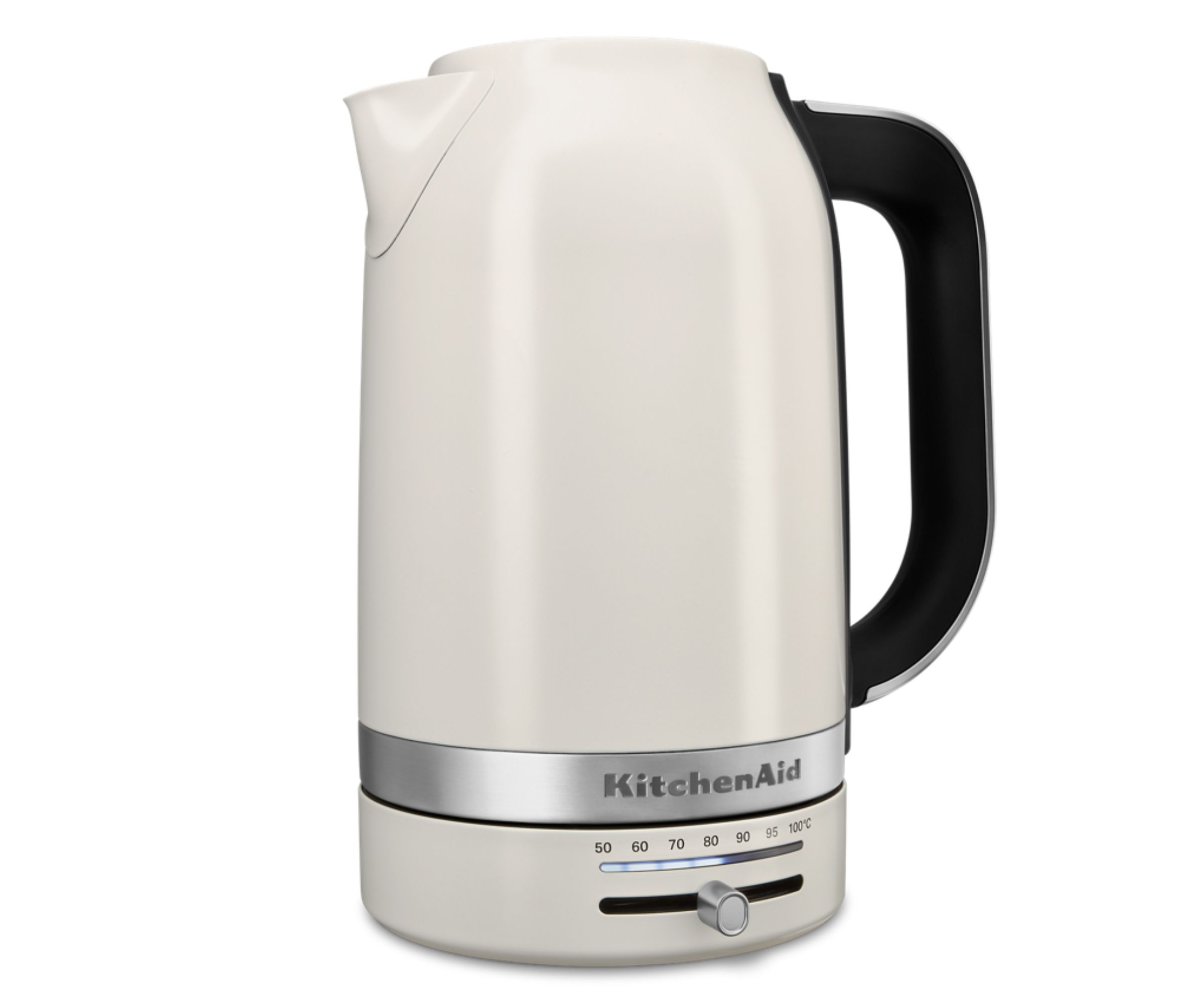
| Dimensions | 10.2 x 6 x 8.6 inches |
| Capacity | 6.3 cup |
| Finishes | Brushed steel, almond cream, empire red, matte black, charcoal gray |
| Material | Double-walled stainless steel |
| Temperature settings | Variable |
Unboxing
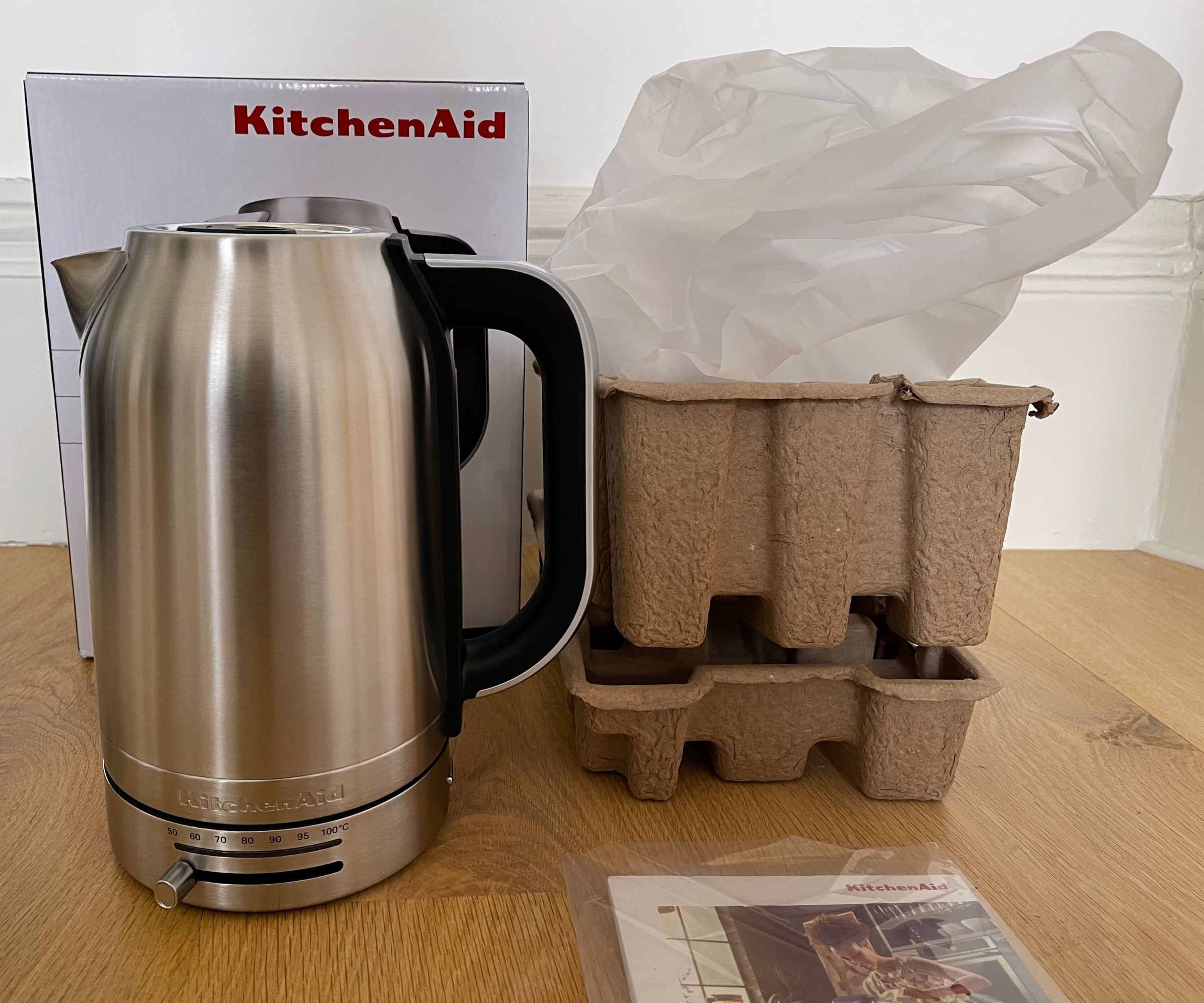
Unboxing the KitchenAid was easy. Kettles are rarely complex to set up, so I didn’t expect to struggle. Most of the packaging was cardboard, which is easy to recycle. There was some plastic coating, which is harder to recycle, but it meant that the kettle arrived in pristine condition.
From the pictures that I’d seen, I didn’t know whether the KitchenAid would feel like a super slick, premium kettle, or a somewhat overpriced basic. You’ll be pleased to know that it was the former. This is slim, with a brushed stainless steel finish. It's available in other signature KitchenAid colors, but I tested it in this understated style.
Overall, it feels like a well-made kettle. This boasts some substantial weight, but not so much that it feels heavy.
Who would it suit?
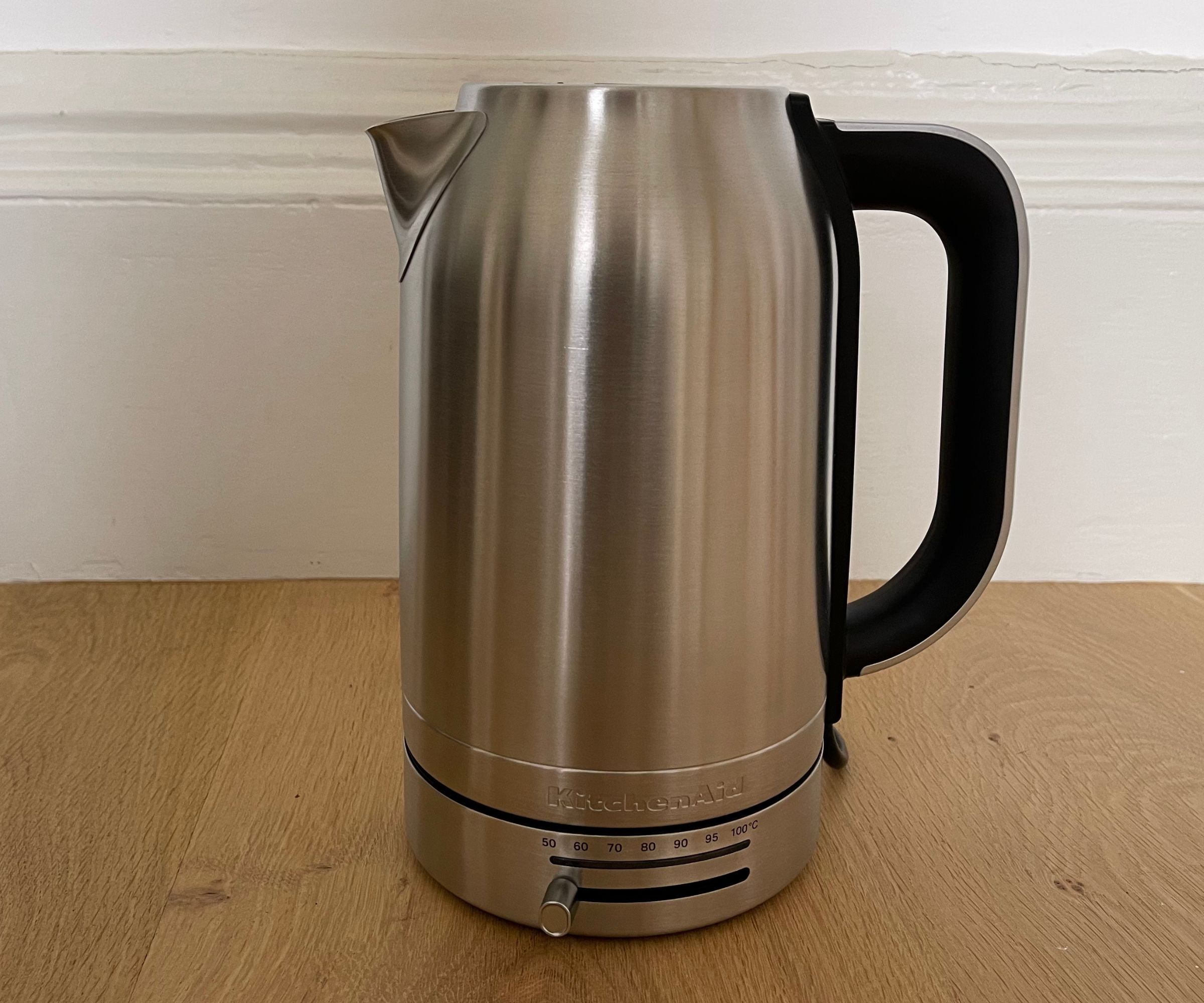
This is certainly one of KitchenAid’s basics. It retails around $100, which is cheap for a temperature variable kettle and an absolute steal for any appliance with the name 'KitchenAid' printed on it. You can choose from a range of color options and, you'll also be pleased to know that KitchenAid makes a coordinating toaster that matches the kettles aesthetic.
The KitchenAid is understated and simple, not for the likes of any ultra-glossy kitchen. However, it’s a great basic if you’re setting up a kitchen and just want a functional, reliable kettle.
The variable temperatures add an extra edge that makes the KitchenAid a good choice for those who like to drink matcha and tea. You can select fifty-degree increments, achieving hot water perfection.
What is it like to use?
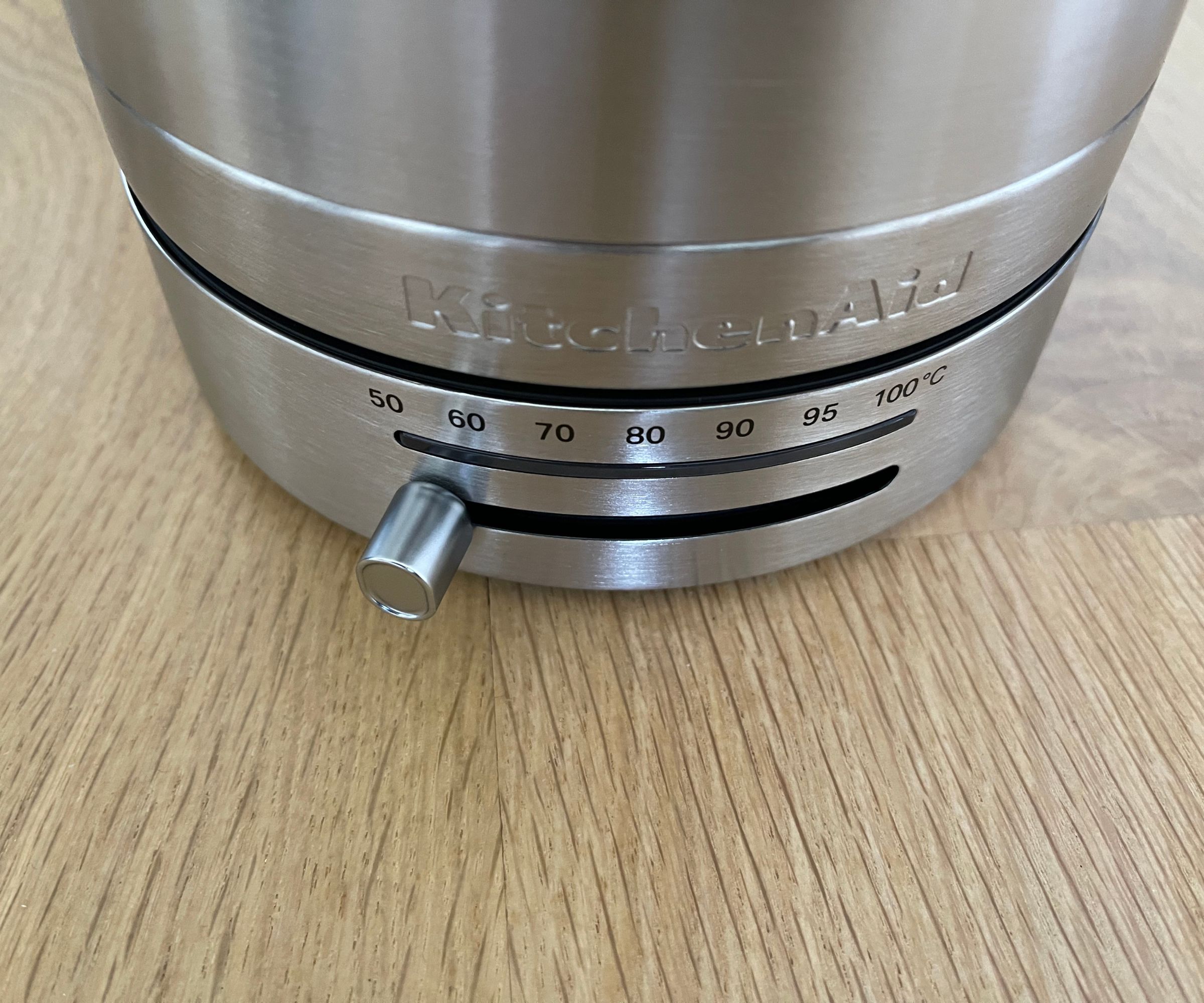
I tested all the temperatures on just one cup of water as well as the full 6.3 cup capacity. The lowest temperature on the KitchenAid’s settings is 122 degrees, perfect for mixing with yeast when baking. The KitchenAid heated one cup up to temperature in just 19 seconds, it was seriously speedy.
At full capacity, it took a little longer, two minutes and twenty-three seconds. For this kind of capacity, that's not a slow boil. It’s about average actually, although it certainly felt slow to me. I'd recommend filling the kettle, setting it to boil, and then doing a task such as washing up.
Even though the exterior is stainless steel, it didn’t get hot, promising some great insulation. When both my single cup and full kettle boiled, I took their temperatures. They were spot on, if not a couple of degrees above on some of the tests. Most of them sat around the perfect temperature.
I checked back after one minute, two minutes, three minutes, four minutes, five minutes, and ten minutes, to see how well the kettle was keeping my coffee hot. The single serving had cooled by 30 degrees within one minute, 54 degrees within two, and it just kept getting cooler. After five minutes, it was too cool to class as even close to the temperature. The fuller carafe was slower to cool, but I still couldn’t use it after five minutes.
75 degrees
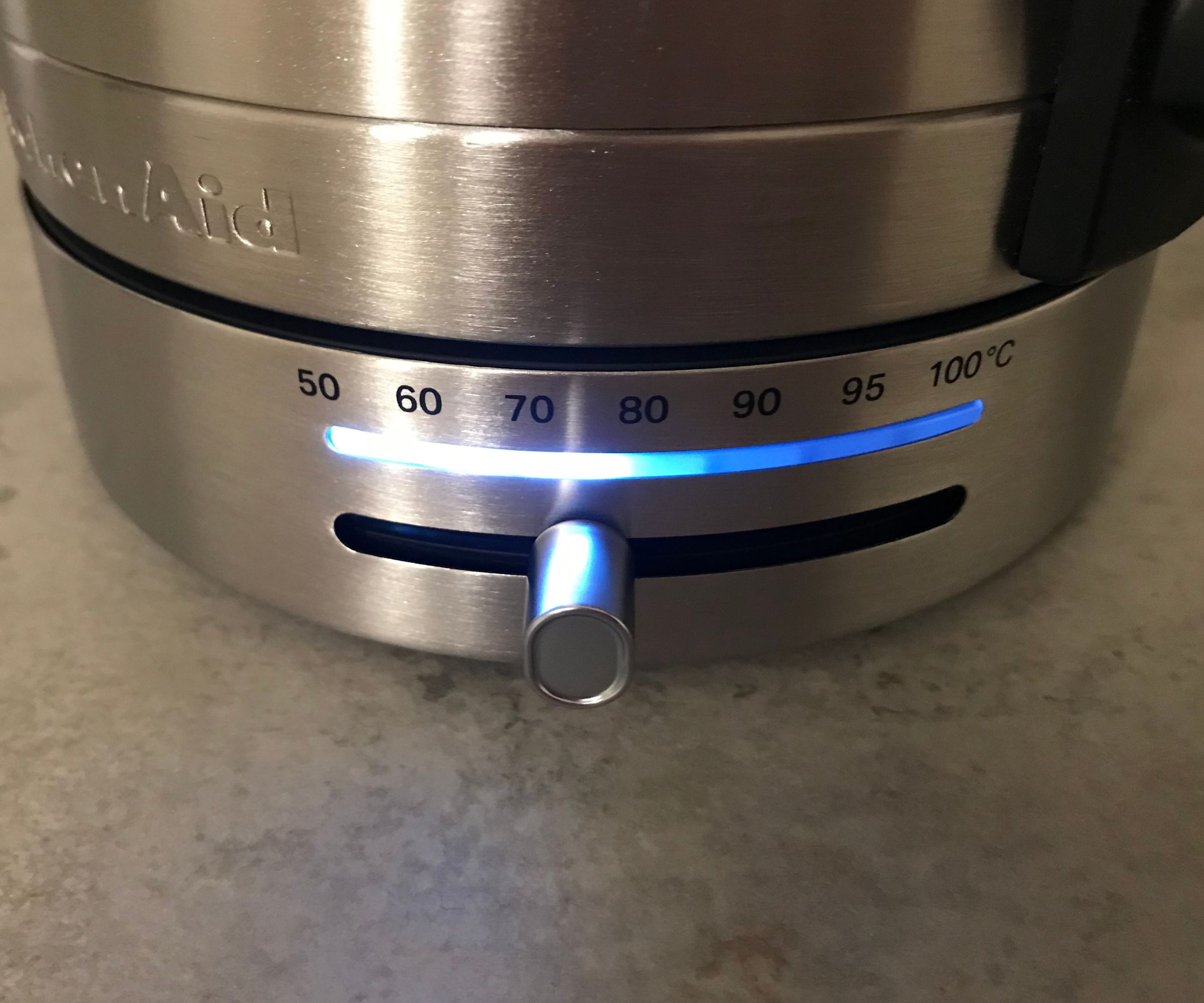
If you like to drink matcha and white tea, you'll want your kettle to be precise when it's set to 176 degrees. I like to drink my matcha a little more mellow, so set the kettle to reach 158 degrees. The KitchenAid consistently overshot it, hitting 165 consistently. This didn't affect the flavors of my matcha much, so if you didn't have a temperature probe, you probably wouldn't notice it. However, in our tests, it came up as an issue.
If you're making coffee, which can be really sensitive to temperature changes, set the temperature to about 10 degrees lower than you want, so that you don't end up scalding your coffee grounds.
When I was aiming for 176 degrees, I set the temperature to 165. When I took the temperature of both my single cup serving and full kettle, they were close to spot on for 170 degrees. This is perfect for brewing with green teas and more delicate leaves. It's a knack that, once you've grown accustomed to, is easy to adjust for.
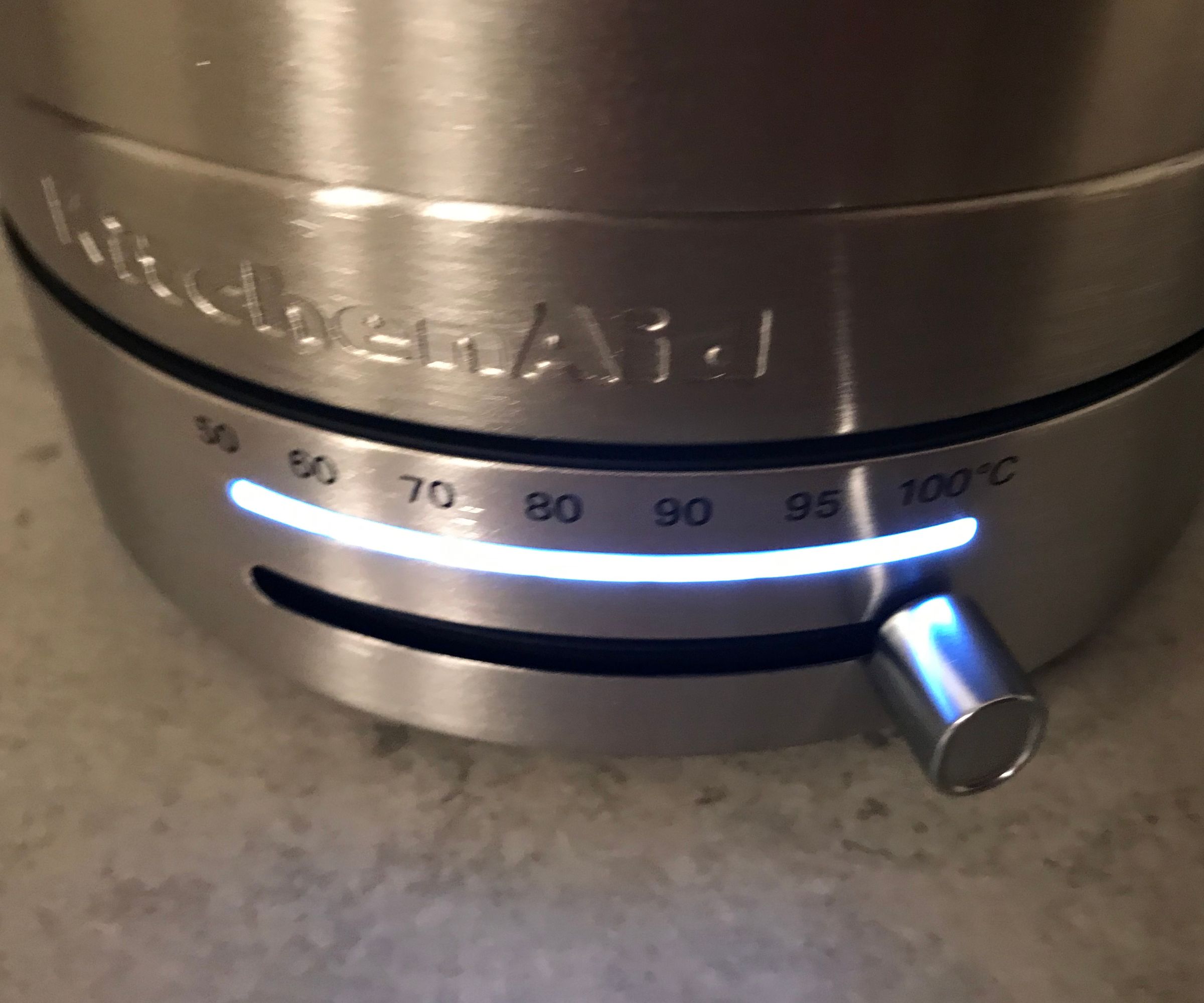
The hottest setting on the KitctchenAid is, of course, 212. My kettle boiled one cup to full temperature in just 34 seconds, which is almost as quick as the coolest setting. It took four minutes and fifty-two seconds to boil a full carafe. Some kettles can take up to eight minutes, so although this might sound like a long time, it's actually pretty speedy.
The kettle did a good job of keeping my boiling water close to a high temperature, across capacities. It was still usable for ‘boiling’ after my four-minute check. At five, it was on the edge, and by ten, it needed a quick re-boil to hit temperature.
Cleaning, storage, and maintenance
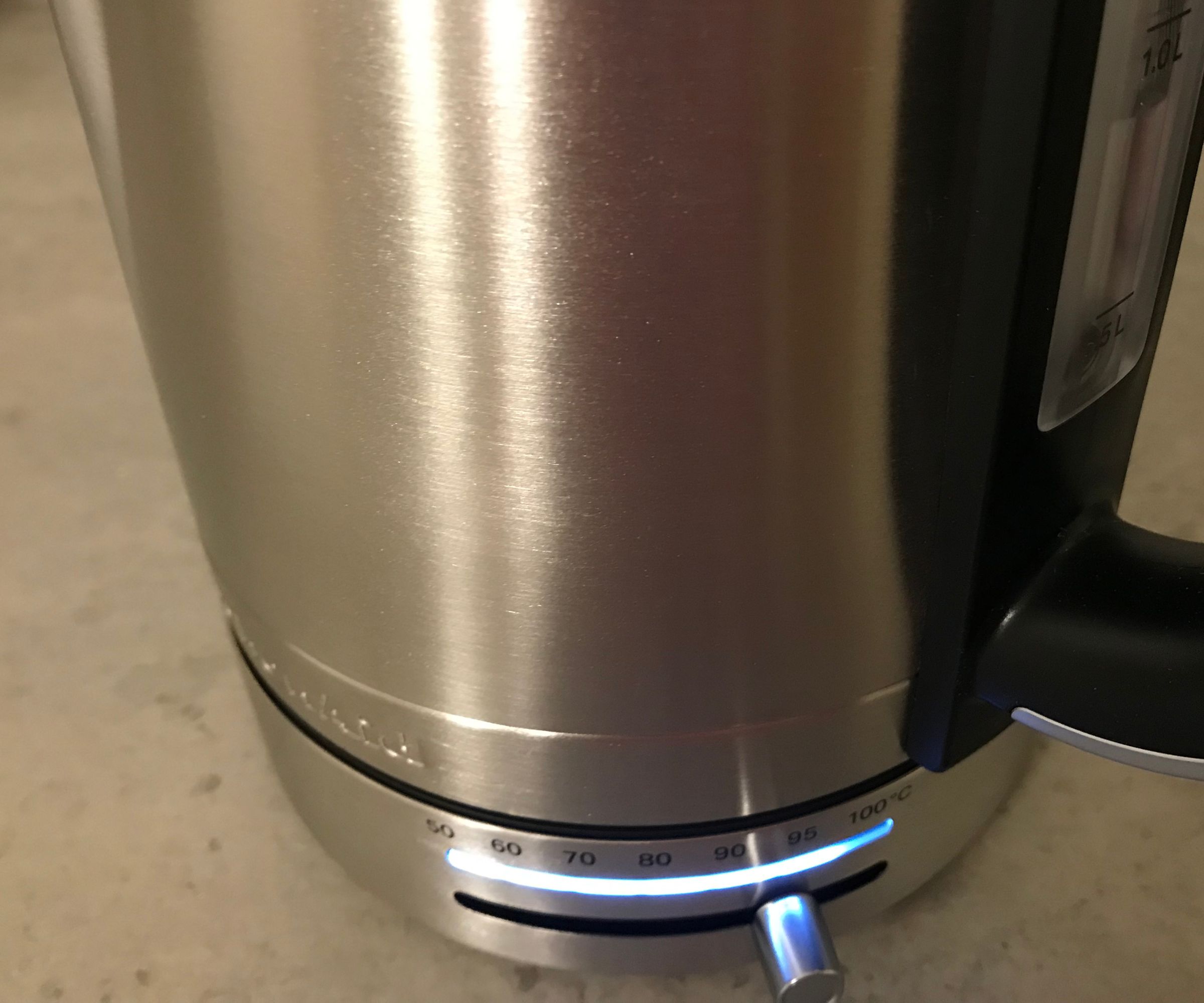
Relative to the 6.3 cup capacity, this is a compact kettle. It’s easy to keep on the countertop and would look great in a kitchen with other stainless steel appliances. The finish didn’t mark with fingerprints, so it’s low maintenance and an easy kettle to put in a home where lots of people will use it. I could imagine this being a great kettle for a second home.
I have a few notes for cleaning the KitchenAid, although these apply to all kettles. Make sure to use filtered water. Not only will this give you consistent flavors, it will also stop any scale from building up around the heating elements. If you don't use filtered water, it's worth learning how to clean an electric kettle for safe, hygienic boiling.
How does it rate online?
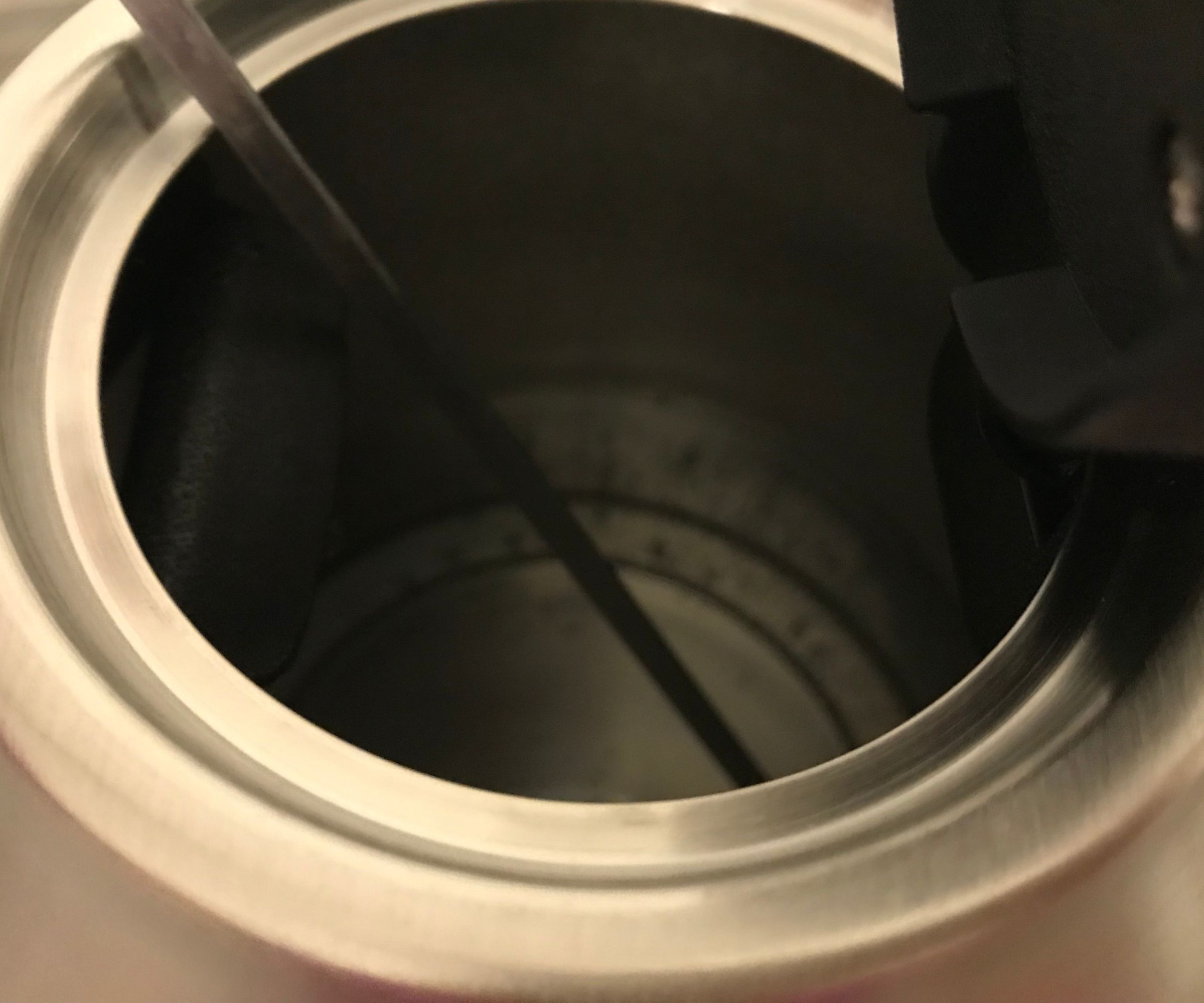
The KitchenAid is a popular kettle online. It's a relatively new addition to KitchenAid's collection and the small amount of reviews that are available online praise this highly. People like the simple aesthetic and speedy boiling times. I think the price had a big influence on people's perceptions of the KitchenAid too, as a number of the reviews had a slightly surprised tone when they were praising it.
There's very little criticism online. Some people found scale building up inside their kettle, but that's not really an issue with the KitchenAid, more with the user. Others questioned the time that it takes to boil, but the average time a full kettle can take is up to eight minutes. Given that this can be done in just four, it's super speedy.
I was ready to agree with criticisms of functional aesthetics, but there weren't any. After scouring through the reviews, the KitchenAid comes off really well.
How does it compare?
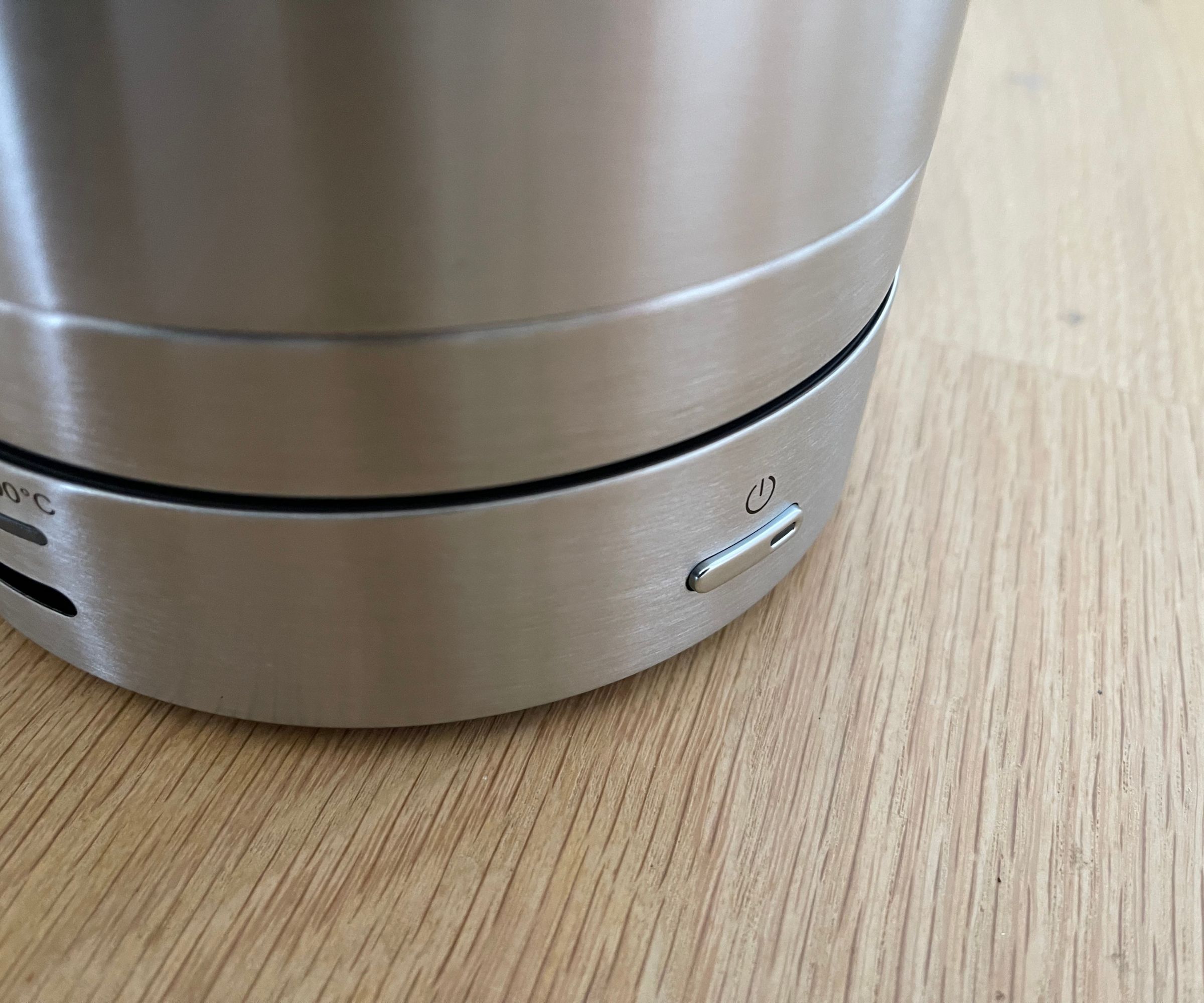
I can’t help but compare this to KitchenAid’s Pro Line kettle. Of course, the Pro Line is more expensive and it can technically do the same, without any extra flourishes, but my oh my is it a looker. I have it in almond cream (to match my toaster) and it’s beautiful. However, the basic KitchenAid is half the price. Whilst you'll have a more practical-looking kettle, you can tuck $100 neatly aside to invest in other more fancy kitchen appliances.
I wanted to compare a similar style kettle to this one and the Aarke immediately sprung to mind. The Aarke has a similar, stainless steel aesthetic and offers variable temperatures, but it’ll cost you a lot more money. It doesn't offer any more capacity or variety in the temperature settings and it'll cost you two and a half times the price. Compared to both of these highly covetable kettles, the KitchenAid is incredible value.
Should you buy it?
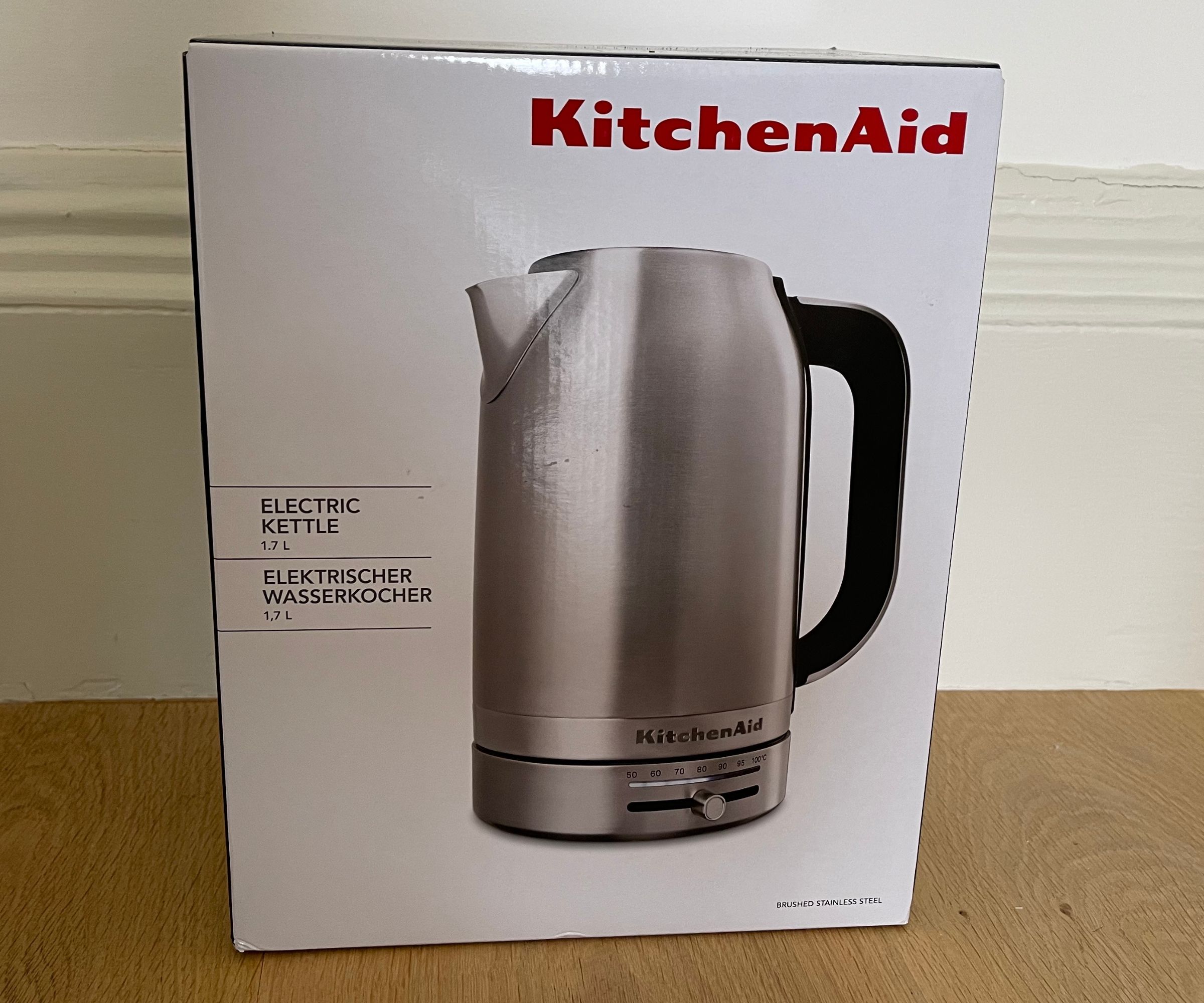
If you want a simple, inexpensive kettle that doesn’t compromise on quality, this is a great option. It is quick to brew, low maintenance, and can achieve accurate, variable temperatures. If you’re after something that’s more blessed in the looks department, I recommend giving the Pro Line kettle a try. It’s more expensive, but I know I’ll be keeping mine for life.
How we test
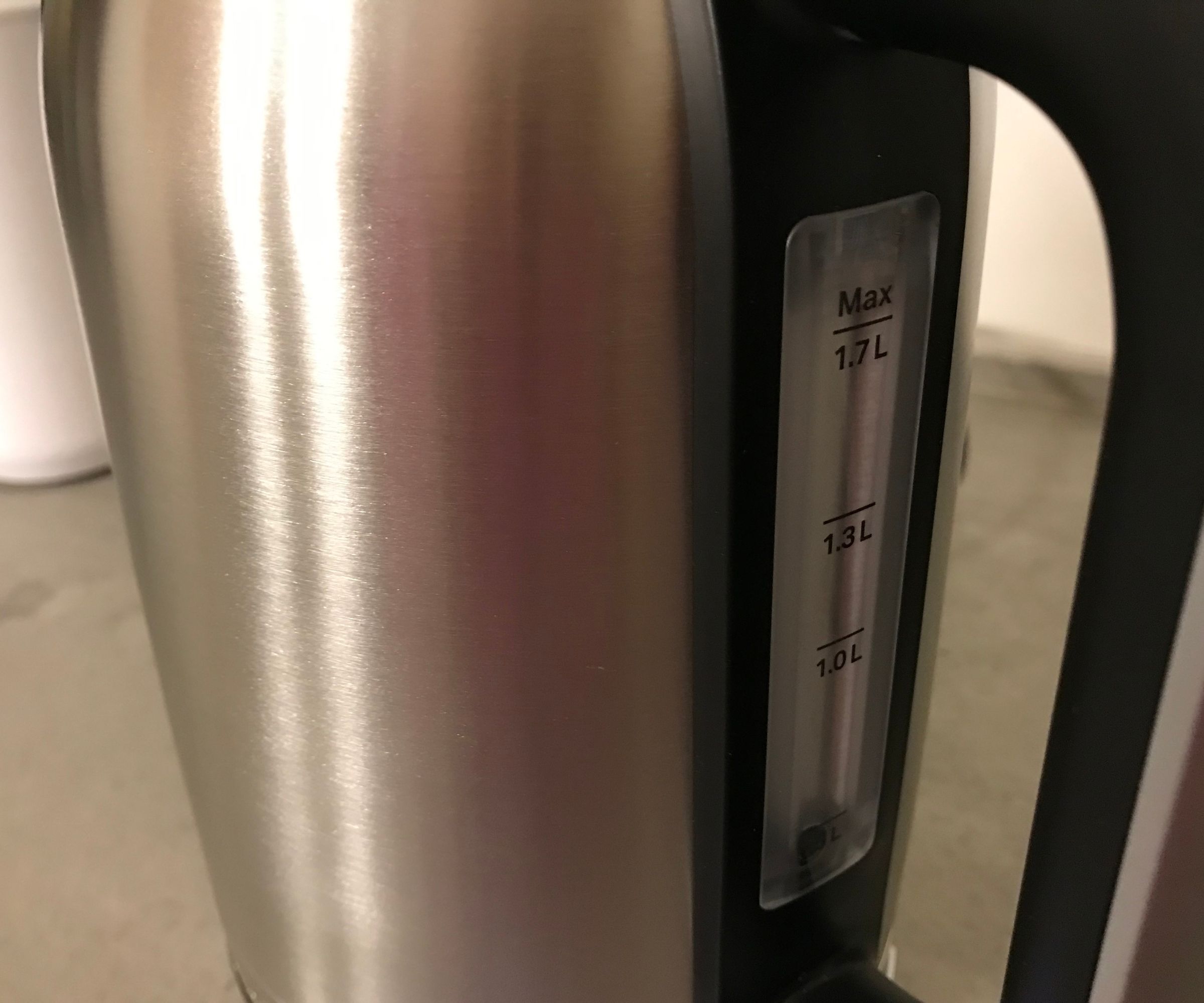
We're stringent with our testing standards at H&G, and while electric kettles might seem straightforward, we don't let standards slip. We test our kettles at the minimum fill level and the maximum fill level. We record any variation in temperature from the claims of the manufacturer and what we actually find on our thermometers, and we also time how long it takes. We also record the noise level in decibels of kettles as they come to a boil. That's to say nothing of all our user tests, assessing how easy the kettle is to use, clean, maintain, and store. There's more information about our processes in our explainer of how we test.
Sign up to the Homes & Gardens newsletter
Design expertise in your inbox – from inspiring decorating ideas and beautiful celebrity homes to practical gardening advice and shopping round-ups.

Laura is our eCommerce editor. As a fully qualified barista, she's our expert in all things coffee and has tested over thirty of the best coffee makers on the market. She has also interviewed Q-Graders and world-leading experts in the coffee industry, so has an intimate knowledge of all things coffee. Before joining Homes & Gardens, she studied English at Oxford University. Whilst studying, she trained as a master perfumer and worked in the luxury fragrance industry for five years. Her collection of home fragrance is extensive and she's met and interviewed five of the world's finest perfumers (also known as 'noses'). As a result of this expansive fragrance knowledge, she always puts quality and style over quantity and fads. Laura looks for products which have been designed simply and with thoughtful finishes.
-
 Drew Barrymore's striped sofa is her most elegant design to date – it oozes East Hampton elegance in time for summer 2025 (and is under $384)
Drew Barrymore's striped sofa is her most elegant design to date – it oozes East Hampton elegance in time for summer 2025 (and is under $384)This subtly striped linen sofa anchors any living room while feeling light and casual – it looks so much more expensive than its price tag
By Megan Slack
-
 Bryce Dallas Howard's bedroom is the most creative, social space in her entire home – she uses 'conversational seating' to create a multifunctional 'salon'
Bryce Dallas Howard's bedroom is the most creative, social space in her entire home – she uses 'conversational seating' to create a multifunctional 'salon'The actress's bedroom doubles as a home office thanks to its clever layout and furnishings, proving that this area is much more than a sleep space
By Hannah Ziegler
-
 Reese Witherspoon upgraded a small corner into a cozy reading nook – designers say you can replicate her 'ultimate little escape' (from $18)
Reese Witherspoon upgraded a small corner into a cozy reading nook – designers say you can replicate her 'ultimate little escape' (from $18)'It’s all about comfort, calm, and just the right amount of cozy': You only need three things to follow Reese's example – and it's not only for book lovers
By Megan Slack